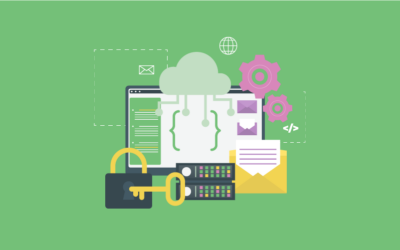Five Trends Continuing in 2025


Dec 12 · 5 min read
It’s that time of year when pundits risk their reputations with predictions about the year ahead. At Legito HQ, we don’t need to speculate – we can see five 2024 trends continuing to pervade in 2025. Let’s see if you agree.
AI Integration
You might say this is obvious, because it’s what everyone is saying. But, we’re emphasising integration. While the world waits to see if AI delivers on the promise (or the threats), we think the optimal path will be evidenced by a trend of deploying AI tools within an environment that keeps a human in the loop.
While the technologists develop terminology to explain AI anomalies (look-up ‘ AI hallucinations’), we notice that AI focussed on specific tasks looks more interesting. In the world of document automation, there are tasks which humans will be happy to hand over to the machines.
Rapid Growth of No-Code Platforms
 No code means no need for developers, which means the creative work of building solutions can be put in the hands of your subject matter experts. When the author of this article started work in a law firm (in the1990s), the lawyers were not allowed to touch the word processor terminals. We had to dictate, and wait for the secretaries to produce our documents. The subject matter experts were separated from the machinery of production. You know what happened next.
No code means no need for developers, which means the creative work of building solutions can be put in the hands of your subject matter experts. When the author of this article started work in a law firm (in the1990s), the lawyers were not allowed to touch the word processor terminals. We had to dictate, and wait for the secretaries to produce our documents. The subject matter experts were separated from the machinery of production. You know what happened next.
It’s the same with modern automation technology. The tools should belong to the people with a vision to make things better, not merely more efficient. Give experts access to tools that don’t require them to become coders.
Automation Focused on Data Protection and Cybersecurity
If you are even remotely involved in deploying technology at scale, you don’t need a trite observation about the importance of information security and data protection. 
Unfortunately, human nature makes us vulnerable to bad actors who know how to exploit a weak link. We must do everything possible to help workers do the right thing, at the right time, by default – we can’t just rely on pages of policy documents mentioned in a staff handbook. We should all welcome a trend of using technology to guide people through prudent execution of work, and relentlessly monitoring evidence of anomalies, and interference. It’s the type of work that is ideally suited to machines.
Cloud Solutions and Remote Working
 The expansion of cloud services made remote working possible, perhaps even inevitable.
The expansion of cloud services made remote working possible, perhaps even inevitable.
Cloud services provide reach and accessibility largely free of the need for prescriptive hardware requirements, while at the same time retaining control and security. Cloud services democratised access to best-of-breed solutions, and the benefits are available equally for small and large enterprises. However, organisations need to adapt to remote working.
Remote working has unintended and unanticipated consequences. Among the challenges of remote working, there is a pressing need to keep colleagues connected when they are not co-located. The challenge isn’t just about maintaining communication over channels like Teams: there is also a need to connect colleagues to sources of expertise, guidance and management in new ways. The experts, management and regulators need tools that allow them to leverage and direct their domain knowledge to dislocated workers at the point of need. You’ve heard of ‘just in time production’ – think about ‘just in time expert assistance’.
Personalised Automation and Customisable Workflows
There is very little chance of enthusiastic adoption of technology, especially automation technology, if it is too rigid.
Any business process that involves humans necessarily has nuances, exceptions, and variance, as well as the benefit of the human touch and judgement. If it were not so, one should outsource the whole process to a machine. A ‘standard process’ is rarely standard, and an end-to-end process rarely proceeds along a straight line. The ability to personalise and customise a solution has more than just cosmetic benefit. However, the facility to build custom solutions must be in the hands of the people who best understand the real-world ebb and flow of your processes and transactions.
Five trends continuing in 2025


Dec 12 · 5 min read
It’s that time of year when pundits risk their reputations with predictions about the year ahead. At Legito HQ, we don’t need to speculate – we can see five 2024 trends continuing to pervade in 2025. Let’s see if you agree.
AI Integration
You might say this is obvious, because it’s what everyone is saying. But, we’re emphasising integration. While the world waits to see if AI delivers on the promise (or the threats), we think the optimal path will be evidenced by a trend of deploying AI tools within an environment that keeps a human in the loop.
While the technologists develop terminology to explain AI anomalies (look-up ‘ AI hallucinations’), we notice that AI focussed on specific tasks looks more interesting. In the world of document automation, there are tasks which humans will be happy to hand over to the machines.
Rapid Growth of No-Code Platforms
 No code means no need for developers, which means the creative work of building solutions can be put in the hands of your subject matter experts.
No code means no need for developers, which means the creative work of building solutions can be put in the hands of your subject matter experts.
When the author of this article started work in a law firm (in the1990s), the lawyers were not allowed to touch the word processor terminals. We had to dictate, and wait for the secretaries to produce our documents. The subject matter experts were separated from the machinery of production. You know what happened next.
It’s the same with modern automation technology. The tools should belong to the people with a vision to make things better, not merely more efficient. Give experts access to tools that don’t require them to become coders.
Automation Focused on Data Protection and Cybersecurity
If you are even remotely involved in deploying technology at scale, you don’t need a trite observation about the importance of information security and data protection. 
Unfortunately, human nature makes us vulnerable to bad actors who know how to exploit a weak link. We must do everything possible to help workers do the right thing, at the right time, by default – we can’t just rely on pages of policy documents mentioned in a staff handbook. We should all welcome a trend of using technology to guide people through prudent execution of work, and relentlessly monitoring evidence of anomalies, and interference. It’s the type of work that is ideally suited to machines.
Cloud Solutions and Remote Working
 The expansion of cloud services made remote working possible, perhaps even inevitable.
The expansion of cloud services made remote working possible, perhaps even inevitable.
Cloud services provide reach and accessibility largely free of the need for prescriptive hardware requirements, while at the same time retaining control and security. Cloud services democratised access to best-of-breed solutions, and the benefits are available equally for small and large enterprises. However, organisations need to adapt to remote working.
Remote working has unintended and unanticipated consequences. Among the challenges of remote working, there is a pressing need to keep colleagues connected when they are not co-located. The challenge isn’t just about maintaining communication over channels like Teams: there is also a need to connect colleagues to sources of expertise, guidance and management in new ways. The experts, management and regulators need tools that allow them to leverage and direct their domain knowledge to dislocated workers at the point of need. You’ve heard of ‘just in time production’ – think about ‘just in time expert assistance’.
Personalised Automation and Customisable Workflows
There is very little chance of enthusiastic adoption of technology, especially automation technology, if it is too rigid.
Any business process that involves humans necessarily has nuances, exceptions, and variance, as well as the benefit of the human touch and judgement. If it were not so, one should outsource the whole process to a machine. A ‘standard process’ is rarely standard, and an end-to-end process rarely proceeds along a straight line. The ability to personalise and customise a solution has more than just cosmetic benefit. However, the facility to build custom solutions must be in the hands of the people who best understand the real-world ebb and flow of your processes and transactions.
More Weekly Articles




















